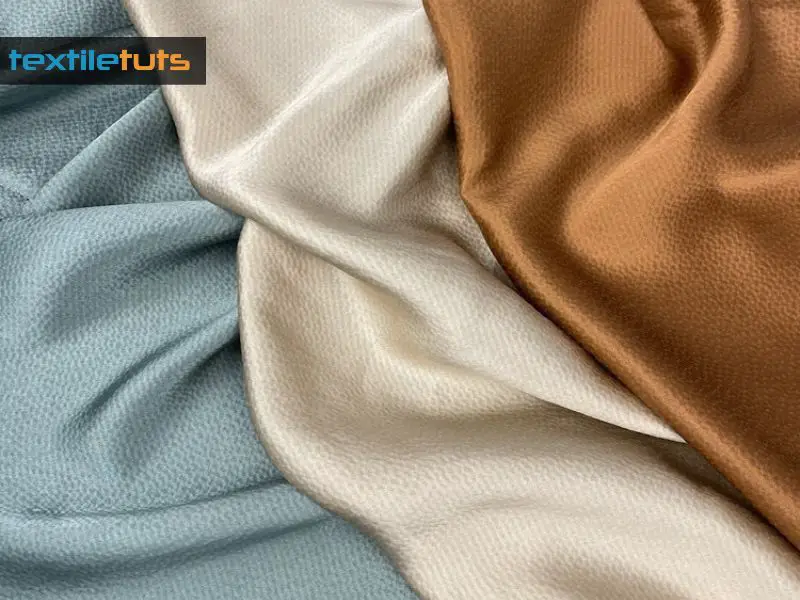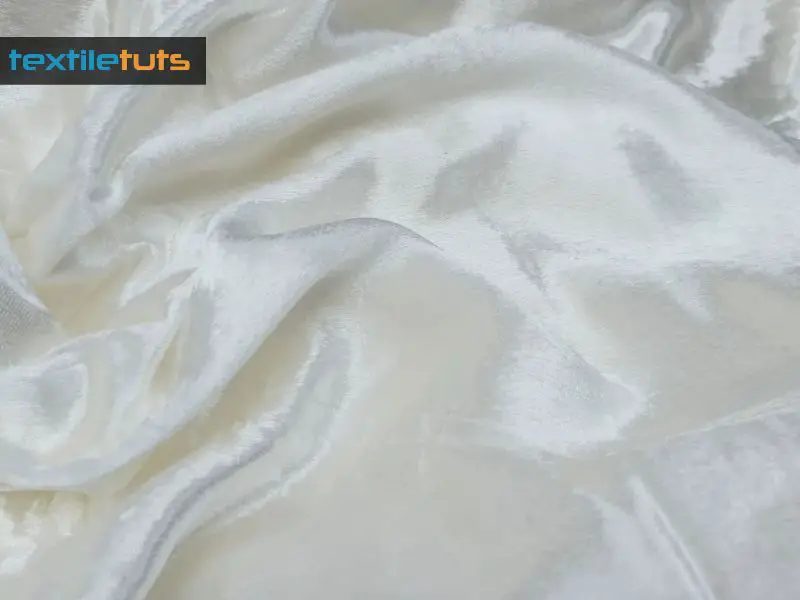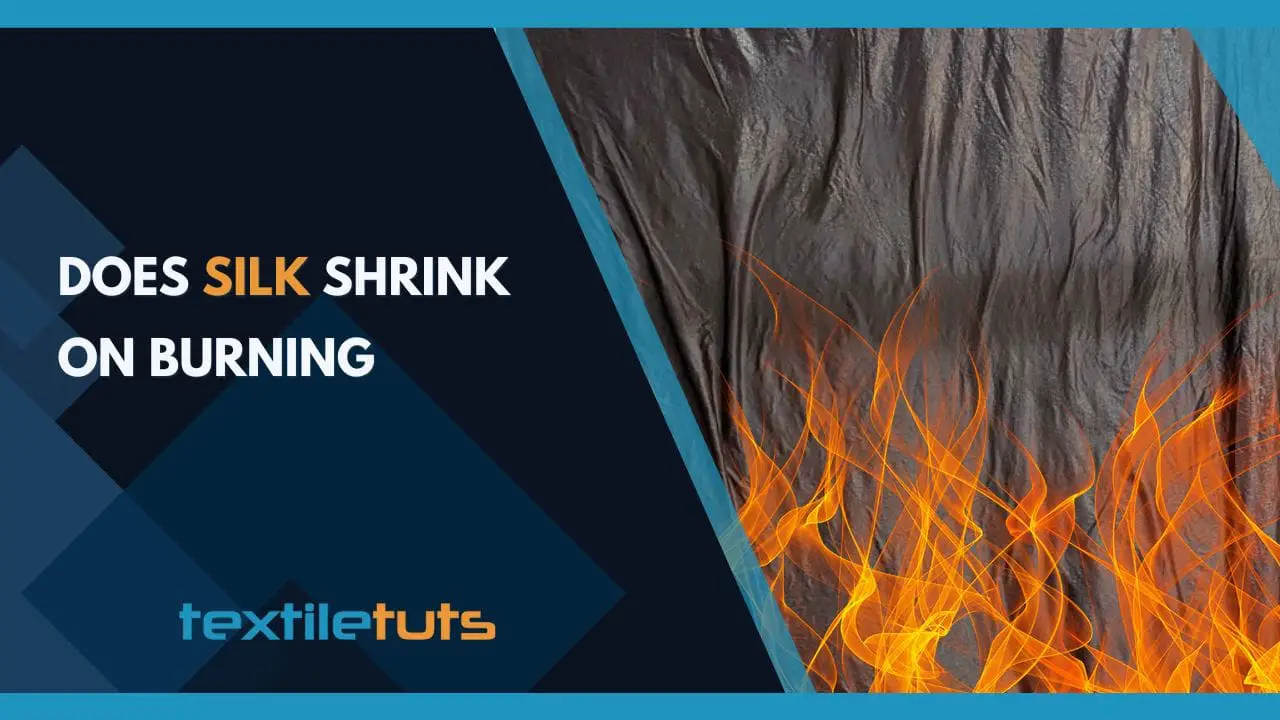Does Silk Shrink On Burning?
Silk has been a highly valued and sought-after fabric for centuries, known for its luxurious feel and delicate appearance. However, questions and controversies have surrounded this delicate fabric, particularly regarding its reaction to fire. Many people, especially those working with silk or owning silk garments, have wondered whether silk shrinks on burning or is a myth.
Burning silk may cause it to shrink, but the extent of the shrinkage depends on the intense heat and the duration of the burning process. When exposed to a flame, silk burns slowly but does not melt. It shrinks away from the flame.
In this article, I will delve into the science behind silk and its reaction to burning, exploring the factors determining whether this prized fabric will shrink.
Does Burning Cause Silk to Shrink?
silk can shrink when exposed to heat, particularly when we’re talking hot water or steam. The natural fibers of silk are protein-based, much like your hair, and they tend to contract when introduced to heat.

But what about burning, you ask? This form of heat exposure doesn’t just cause shrinking—it can lead to the ultimate demise of your beloved silk. Direct flame can scorch, char, or even turn silk into delicate ash.
However, we don’t want to be alarmists! The thought of ‘burning’ in a controlled fashion might bring to mind heat setting or a carefully managed ironing process.
In these cases, the risks of shrinking your silk are minimized if performed correctly and at the appropriate temperature settings. A low heat and a protective cloth between the iron and the silk can help you avoid a fashion catastrophe.
Factors that Affect Silk’s Shrinkage on Burning
When silk encounters heat, as in the case of burning, an intriguing transformation occurs – it shrinks. But why does this happen? And what are the factors that influence this delicate dance of fabric and flame? Let’s explore the factors affecting silk’s shrinkage when it meets its fiery foe.
Fabric Composition and Quality
Silk can be pure or blended with other fibers, significantly affecting how it shrinks when burnt. Pure silk will have a consistent reaction without any other materials woven into it.
However, if silk is blended with wool, synthetic fibers, or cotton, the behavior when exposed to flame can differ radically.
The quality of the silk – whether it’s raw or has been treated with finishes and dyes – also affects its shrinkage. Higher-quality silk is generally more resilient, while lower-quality options might shrink more readily.
Moisture Content
Silk’s moisture content plays a vital role in its reaction to burning. High humidity levels absorbed within the fabric can mitigate shrinkage since the presence of water releases steam when heated, which in turn can dampen the shrinkage effect.
Conversely, bone-dry silk may shrink more drastically upon burning, as no moisture can buffer the intense heat.
Heat Intensity and Duration
The intensity of the flame and the duration of exposure to heat are crucial factors. A small flame that licks at the silk briefly may cause negligible shrinkage, if any.
But expose that same silk to an intense fire or prolonged heat, and you’ll witness a dramatic size reduction. Silk fibers contract when heated; the longer and hotter the burn, the more pronounced the shrinkage.
Tension During Exposure
Closely related to shrinkage is how the silk is held when it burns. If the silk fabric is taut during burning, it has less room to contract, and shrinkage may be less noticeable. On the other hand, if the fabric is loose and free to move, it can shrink significantly upon exposure to heat.
Chemical Treatments and Finishes
Various treatments applied to silk can influence its shrinkage. Some silks are treated to be flame-retardant, which can limit shrinkage by preventing the fabric from burning easily. Other chemical finishes may affect the fiber’s structure, making it more susceptible to shrinking when burned.
Unique Physical Properties of Silk Fabric
Silk, often hailed as the queen of textiles, boasts many unique physical properties that set it apart from other fabrics. Derived from the silkworm’s laborious spinning, this luxurious material has captivated hearts for centuries. Here’s a closer look at the exceptional physical characteristics that make silk a standout in the world of textiles:

Softness and Smoothness
Silk’s hallmark lies in its unparalleled softness and smooth texture. When touched, it feels like a gentle caress against the skin, creating an indulgent experience that few fabrics can replicate.
Natural Sheen
One of silk’s most enchanting features is its natural sheen. The fibers’ triangular prism-like structure refracts light, giving silk a lustrous glow that adds a touch of sophistication to any garment.
Breathability
Silk is a breathable fabric, allowing air to circulate through its fibers. This natural breathability makes it an ideal choice for clothing, promoting comfort by keeping the body cool in warm temperatures and warm in cooler climates.
Moisture Absorption
Despite its delicate appearance, silk has excellent moisture-wicking properties. It can absorb up to 30% of its weight in moisture without feeling damp, making it comfortable to wear in various conditions.
Temperature Regulation
Silk’s thermoregulatory properties contribute to its versatility. It helps keep the body temperature balanced, adapting to the surrounding environment to provide comfort in both summer and winter.
Durability
Despite its delicate feel, silk is surprisingly durable. The long, continuous fibers contribute to its strength, ensuring that well-cared-for silk garments can withstand the test of time.
Hypoallergenic Nature
Silk is naturally hypoallergenic, making it an excellent choice for those with sensitive skin. Its smooth surface reduces friction, minimizing the likelihood of skin irritation or allergies.
Biodegradability
In an era where sustainability is paramount, silk stands out for its biodegradability. Being a natural fiber, silk decomposes over time, leaving a minimal environmental footprint compared to synthetic counterparts.
Unique Burning Characteristics
As discussed earlier, silk exhibits distinctive behavior when exposed to flame. It burns slowly, shrinks away from the heat, and leaves behind a characteristic odor, providing a unique method for identifying genuine silk.
Resistance to Dirt and Odor
Adding to its impressive qualities, silk showcases a remarkable resistance to dirt and odor. The smooth surface of silk fibers naturally repels dirt, preventing particles from embedding themselves within the fabric.
Furthermore, silk’s inherent resistance to odor is a notable advantage. Unlike some synthetic fabrics that tend to retain unpleasant smells, silk has the ability to resist the absorption of odors.
Does Silk Shrink After Washing?
Silk is known for its delicate and luxurious nature; proper care is essential to maintain its quality. Generally, silk has the potential to shrink if exposed to certain conditions, including improper washing methods.
However, the extent of shrinkage can vary based on factors such as the type of silk, weave, and any pre-treatment the fabric has undergone. Silk can experience shrinkage after washing due to several factors:
Water Temperature
Silk fibers are sensitive to temperature. Exposure to hot water can cause the fibers to contract and lead to shrinkage. Using cold water is recommended to minimize this risk.
Agitation
Rough handling during washing, including vigorous scrubbing or wringing, can agitate the delicate silk fibers, causing them to shrink. It’s essential to handle silk garments gently to avoid this.
Detergent Choice
Harsh or alkaline detergents can affect the structure of silk fibers and contribute to shrinkage. Using a mild, silk-friendly detergent helps preserve the integrity of the fabric.
Machine Drying
Silk is particularly vulnerable to heat. Using a machine dryer with high heat settings can lead to significant shrinkage. Air drying is recommended to prevent exposure to excessive heat.
Incorrect Residue Removal
Incomplete removal of detergent or soap residues during rinsing can affect the silk fibers and contribute to shrinkage. Thorough rinsing is crucial to prevent this issue.
Ways to Prevent Silk from Shrinking
Preventing silk from shrinking involves adopting careful washing and drying practices. Here are some effective ways to minimize the risk of silk shrinkage:

Hand Wash with Cold Water
Hand washing is generally the safest method for cleaning silk. Use cold water instead of hot water, as high temperatures can cause silk fibers to contract.
Use a Gentle Detergent
Choose a mild, silk-friendly detergent that does not contain harsh chemicals. Avoid bleach or strong cleaning agents, as they can damage silk fibers and contribute to shrinkage.
Avoid Aggressive Agitation
Handle silk garments with care during washing. Avoid vigorous scrubbing or wringing, as rough handling can agitate the fibers and lead to shrinkage.
Pre-treat Stains
Address stains promptly with a gentle remover or hand-spotting the affected area before washing. This can help prevent the need for aggressive washing, reducing the risk of shrinkage.
Test for Colorfastness
Before washing the entire garment, test for colorfastness in a small, inconspicuous area. This ensures that the colors won’t bleed or fade during the washing process.
Air Dry
Air drying is the preferred method for drying silk. Lay the garment flat on a clean, absorbent towel and reshape it to its original dimensions. Avoid hanging silk items, as the weight of the water can stretch the fabric.
Steam Instead of Ironing
If your silk garment wrinkles, use a steamer rather than ironing. Ironing can subject the fabric to heat, potentially causing shrinkage.
Check Care Labels
Always follow the care instructions on the garment’s label. Different types of silk and blends may have specific care requirements, and adherence to these guidelines helps preserve the fabric’s integrity.
Pre-shrunk Fabric Before Sewing
If you are working with silk fabric for sewing, consider pre-washing the fabric before cutting and stitching. This can help remove any initial shrinkage and prevent surprises later on.
Silk Identification Test by Burning
Can I Use The Same Method to Test If My Underwear Is Shrinking As I Would With Silk?
Yes, you can use the same method to test if your underwear is shrinking as you would with silk. Simply measure your underwear before and after washing and drying, and compare the measurements. Most underwear shrink over time, so it’s important to pay attention to washing and care instructions.
Is Silk Similar to Jute in Its Reaction to Burning and Shrinking?
Silk and jute showcase distinct behaviors when exposed to heat. While silk burns with a smell akin to burning hair and curls away due to its protein origin, jute fiber burning properties differ significantly. Being plant-based, jute produces the scent of burning paper and leaves behind a fine, grayish-white ash.
Final Words
Silk will shrink when exposed to high heat or open flame. This is due to the natural protein fibers in silk breaking down under extreme temperatures. However, silk can maintain its shape and beauty for many years with proper care and handling.
So, while it is essential to be mindful of heat and fire when wearing or caring for silk, there is no need to fear excessive shrinkage. By following simple care instructions, you can continue to enjoy the luxurious feel and look of silk without worry.

